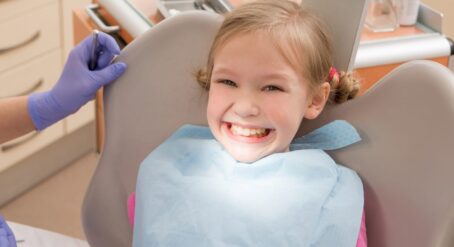With so many new options now available to treat orthodontic problems, it’s understandable if you are be feeling a little overwhelmed. There are four common treatments used by orthodontists for patients of all ages. As you will see, each has its pros and cons, but there’s no hiding the fact that traditional metal braces are still generally the best option for kids.
First off – What is an orthodontist?
If you’re wondering what an orthodontist is or how they differ from your regular dentist, then look no further. An orthodontist is a dental specialist who has done an additional three years of study and specialises in the prevention, diagnosis and treatment of dental and facial growth irregularities. Orthodontists provide a wide range of treatment options to straighten crooked teeth, fix bad bites and align the jaws correctly.
While they share many similarities with your regular dentist, including their general dental degree, only an orthodontist is qualified to properly treat and diagnose irregularities of the teeth and jaw.
How do I know if I need to see an orthodontist?
Whether you struggle with jaw issues from a misaligned bite, have overcrowding of teeth in your mouth, or simply want to improve the appearance of teeth by straightening them and reducing any gaps, then these are some of the reasons why you should see an orthodontist. Only an orthodontist has the skills, knowledge and experience to safely treat and diagnose dental irregularities, and that is one of the reasons why you should see an orthodontist for your treatment.
Whether you’re considering getting orthodontic treatment or simply want to understand your options and their costs, you should make an appointment with a registered specialist orthodontist to discuss your options.
4 common orthodontic options
As an overview, here are the treatment options available in Australia:
1. Ceramic Braces: a popular choice for adults
2. Lingual Braces: because no one will know
Lingual braces are truly invisible – these custom-made braces are attached to the inside surfaces of your teeth, instead of the front. Lingual braces are 100% personalised to follow the individual contours of your teeth, ensuring they are as comfortable and effective as possible. However, because lingual braces are located near the tongue, they can take some time to get used to wearing and will temporarily impact on speech and eating more than regular braces. It’s very rare to see lingual braces on children, in fact the majority of lingual brace wearers are adults who require a truly invisible option.
3. Clear Aligners: require discipline
A sequence of clear plastic aligners can provide a good alternative to fixed braces, especially for less severe orthodontic problems in teens and adults. Clear aligners are removable and virtually invisible, but in most cases are not suitable for young children as their design is such that they can only move teeth efficiently in a fully developed adult dentition. Furthermore, if aligners are not worn responsibly or are removed from the mouth too often, the treatment will not work. Fixed braces, on the other hand, cannot be removed and are almost guaranteed to produce excellent treatment results.
4. Metal Braces: tried, tested and terrific for kids
In an age of broad orthodontic treatment options, traditional metal braces are still the most common treatment option for kids and teens. With this type of treatment, very small metal brackets are glued to the teeth and are then connected with a thin wire, which is adjusted or changed at regular intervals to gradually straighten your teeth and correct your bite – making them a very effective and reliable treatment option.
Modern metal braces are much smaller and more comfortable than ever before. You’ll often see metal braces jazzed up with colourful elastic modules to make them fun and fashionable for your kids! Although dependent on each case, traditional metal braces are generally the most cost effective option compared to other orthodontic treatments.
What is the best age for orthodontic treatment?
When it comes to orthodontic treatment, age isn’t an issue. While it is generally recommended that orthodontic treatment should take place during the adolescent years when the patient is still undergoing physical growth, the developments in treatment options in recent years have meant more adults are able to achieve their perfect smile.
These days, there is no best age for orthodontic treatment.
Rather your willingness to care for your smile and consistently wear any removable devices will result in much better results at any age.
Are there any risks with orthodontic treatment?
Orthodontic treatment risk can include toothache and mild discomfort, scratches and ulcers, gum infections, enamel demineralisation, and root shortening.
To best ensure the health and safety of your teeth it is vital that you always see a registered specialist orthodontist and refrain from attempting any DIY treatment methods as these can damage your teeth and may result in tooth loss.
Whether you’re considering traditional braces or an alternative to braces, only an orthodontist has the training, experience and expert knowledge to be able to offer you the full suite of treatment options and give you and your child the confidence that you’re in the best hands.











Hi, I’m looking to do treatment for my overjet and crowded teeth, and i’m wondering would i have to extract any teeth? Is it possible to achieve the same result without extracting teeth?
Hi guys,
I went through IPc Health and was told that my 12 year old son needed braces due to underbite and a crossbite. However when the sent referral to Dental hospital in Carlton they told me that he’s still too young and to wait a couple of years before we try again. I know we are in the system but have not been put on a waiting list. Does he qualify for another chance or free braces from give a smile? I really cannot afford it but I know he is so depressed and unhappy about his teeth? Are there any other options? I’m struggling to make mortgage payments let alone braces. I have a health care card if that helps? Any assistance would be appreciated.
Thanks Grace
Hi Grace,
Orthodontics Australia has information on how to access the Give a Smile program here: Give a Smile program information.
It would be worthwhile having an appointment with a specialist orthodontist to check on timing of treatment with your son. Orthodontists offer many options for payment plans that may work for you. To locate your nearest orthodontist please use our Finder Tool here: https://finder.orthodonticsaustralia.org.au
We hope this helps!